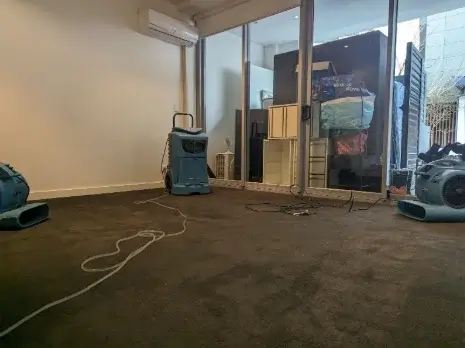Mould is a common issue in Sydney. The city’s humid climate creates the perfect environment for it to thrive.
But what does this mean for homeowners and renters?
Mould can cause a variety of health problems. It can also damage your property if left untreated.
This guide will help you understand the causes of mould growth in Sydney. It will also provide you with effective prevention solutions and mould removal strategies.
Whether you’re dealing with a small mould issue or a large infestation, this guide has you covered.
Let’s dive into the world of mould removal Sydney and learn how to maintain a healthy, mould-free environment.
Understanding Mould in Sydney
Mould is more than just an aesthetic problem. It thrives in warm, damp environments, making Sydney a prime location.
The city’s humidity creates an ongoing challenge for property owners. Knowing how mould develops is the first step to prevention.
Here are some key factors that encourage mould growth:
- High humidity levels
- Poor ventilation
- Water leaks and condensation
- Lack of natural light
Addressing these issues can curb mould presence, safeguarding health and property alike.
The Sydney Climate and Mould Growth
Sydney’s climate swings from humid summers to milder winters. This fluctuation can lead to increased indoor humidity.
Homes with poor ventilation are particularly vulnerable. Moisture trapped indoors creates the ideal conditions for mould.
Preventative actions should focus on controlling indoor humidity. Implementing effective airflow solutions can make a difference.
Health Risks Associated with Mould
Mould isn’t just unsightly; it poses several health risks. Breathing in mould spores can lead to respiratory issues.
Symptoms can include coughing, wheezing, and throat irritation. In some cases, mould can trigger allergic reactions.
Vulnerable groups, like children and the elderly, face higher risks. Addressing mould promptly is crucial to maintaining a healthy living space.
Identifying Mould in Your Home or Business
Spotting mould early can save a lot of hassle. Mould likes to grow in hidden or seldom-checked areas.
Look for discolored spots on walls or ceilings. Musty smells are also a strong indicator of mould presence.
Mould can be sneaky, hiding in places you don’t often see. Check under sinks, in basements, and around windows.
To detect mould effectively, consider these inspection steps:
- Conduct a visual assessment of common trouble spots.
- Use your sense of smell to identify musty odors.
- Check areas with past water damage or leaks.
- Watch out for peeling paint or wallpaper.
Sometimes, an inspection by a professional is the best route. Experts can uncover hidden mould and advise on remedies.
Signs of Mould Infestation
Signs of mould can appear in various ways, not just visually. Foul, damp odors are a frequent giveaway.
Discoloration on surfaces like walls or tiles needs attention. Mould can also leave telltale rings or blotches.
Peeling paint is another hint that mould may be present. Distortion or warping of materials could also signal a problem.
When to Call for a Mould Inspection
Certain situations warrant a professional mould inspection. If mould returns despite cleaning, call an expert.
Recurring mold signals a deeper issue that needs attention. Properties with a history of water damage are also high-risk.
Unexplained health symptoms among occupants may indicate mould. Hiring an expert can prevent complications.
If you plan major renovations, an inspection ensures a mould-free start. Proactive measures are best taken early.
DIY Mould Removal vs. Professional Mould Remediation
Deciding between DIY or professional mould removal depends on the problem’s scope. Small mould patches are manageable with home solutions. However, large infestations require expert handling.
Here are some factors to consider:
- Size of the affected area: Larger zones may need professionals.
- Health risks: Safeguard against exposure to toxic mould.
- Safety equipment: DIY may require PPE, which might be lacking.
- Expertise: Professionals offer comprehensive solutions.
DIY approaches work for minor issues if done safely. Use appropriate cleaning agents and protective gear. Remember, professionals in Sydney have the experience and equipment needed.
Pros and Cons of DIY Mould Cleaning
DIY mould cleaning can save money and time. For small patches, household cleaners might suffice. However, there are risks involved.
Improper cleaning can spread mould spores. Lack of experience might result in incomplete removal. Protective gear is essential for safety.
DIY might address symptoms but miss root causes. Treating mould effectively requires understanding its breeding conditions.
When to Hire a Mould Removal Professional
Professional mould removal becomes necessary for substantial infestations. Experts mitigate severe mould risks effectively. They handle difficult-to-reach areas using specialized tools.
Chronic mould issues often signal deeper problems. Professionals conduct detailed inspections and offer lasting solutions. Health concerns for young children or elderly should prompt contacting experts.
In Sydney, reputable mould removal services provide quick, efficient interventions. A professional approach delivers peace of mind and restores a healthy environment.
Preventative Measures to Keep Mould at Bay
Preventing mould requires a proactive approach. Implementing effective strategies can drastically reduce the risks. Here are key measures to consider:
- Monitor indoor humidity, keeping it below 60%.
- Ensure adequate ventilation, especially in high-moisture areas.
- Repair water leaks swiftly to prevent mould-friendly environments.
- Use mould-resistant products in vulnerable spaces.
- Regularly check and clean areas prone to moisture.
Addressing potential mould causes is crucial. Regular vigilance and maintenance minimize mould’s grip. By investing in preventive steps, the home or workplace remains healthier and safer.
Tips for Controlling Humidity and Ventilation
Humidity control is essential for mould prevention. Dehumidifiers help maintain optimal moisture levels. Air circulation is another crucial factor.
Ensure windows and vents are unobstructed. Install exhaust fans in bathrooms and kitchens. This helps disperse humid air quickly.
Inspect ventilation systems for efficiency regularly. Engage professionals for any necessary improvements. Balanced humidity and airflow deter mould effectively.
Regular Maintenance and Cleaning
Consistent cleaning routines help keep mould at bay. Focus on moisture-prone areas for best results. Swiftly dry wet surfaces to prevent spore growth.
Remove any visible mould promptly using suitable cleaners. Prioritize areas like bathrooms and basements. Regular vacuuming reduces dust, which can harbor mould spores.
Timely maintenance prevents larger issues. Check for leaks and fix them early. Scheduled inspections ensure ongoing vigilance. With routine care, homes stay mould-free.
Choosing the Right Mould Removal Service in Sydney
Finding the right mould removal service is key to solving your problem effectively. With numerous options in Sydney, making an informed choice is important. Select a company that offers comprehensive mould solutions.
Consider companies with a proven track record. Look for positive reviews and satisfied customer testimonials. Experience and expertise are crucial for quality service. Be sure they offer follow-up support for assurance.
- Licensed and certified technicians
- Insurance coverage for added security
- Free consultations and transparent pricing
- Use of safe, eco-friendly mould removal methods
- Guarantees or warranties on their work
Evaluating these factors can guide your decision. A reliable mould removal service safeguards your home. Take the time to choose wisely.
What to Look for in a Mould Remediation Company
When selecting a mould remediation company, prioritize credibility. Industry certifications indicate professional standards. Certified professionals ensure effective mould treatment.
Examine the range of services offered. A well-rounded approach tackles mould comprehensively. Inquire about their use of advanced equipment and technology. Modern methods enhance removal efficiency and safety.
Customer service is equally vital. A responsive company addresses concerns promptly. Ensure they provide clear communication throughout the process. A trustworthy provider is transparent about costs and procedures.
Questions to Ask Before Hiring a Mould Removal Expert
Before hiring, ask detailed questions to evaluate suitability. Begin by inquiring about their experience with similar mould issues. Knowledge of specific cases indicates expertise.
Ask about their mould inspection process. A thorough assessment is essential for targeted treatment. Confirm what methods and products they use for removal. Safety and effectiveness should be their priority.
Clarify their post-remediation protocol. Will they conduct follow-up checks? Ongoing support can prevent recurrence. Finally, discuss their warranties or guarantees on services. This adds assurance and value to your investment.
Conclusion: Maintaining a Mould-Free Environment
Maintaining a mould-free environment is crucial for health and property integrity. Proactive measures and vigilance can prevent mould growth effectively. Regular inspections and maintenance help catch issues early.
Keep a close eye on humidity levels. Proper ventilation in your home or business prevents moisture buildup. Address leaks or water damage without delay to stop mould before it starts.
Choose professional services for severe cases. Expert assistance ensures thorough mould removal and peace of mind. Investing time and resources now saves costs and stress later.
The goal is a healthy, safe indoor space. Diligence and prompt action are your best tools for achieving it. Commit to mould prevention for a better quality of life in Sydney.
Call to Action: Address Mould Issues Promptly
Don’t delay tackling mould issues in your property. Immediate action reduces damage and health risks. Ensure your home and family stay safe and sound. Consider professional help for efficient and effective solutions.


